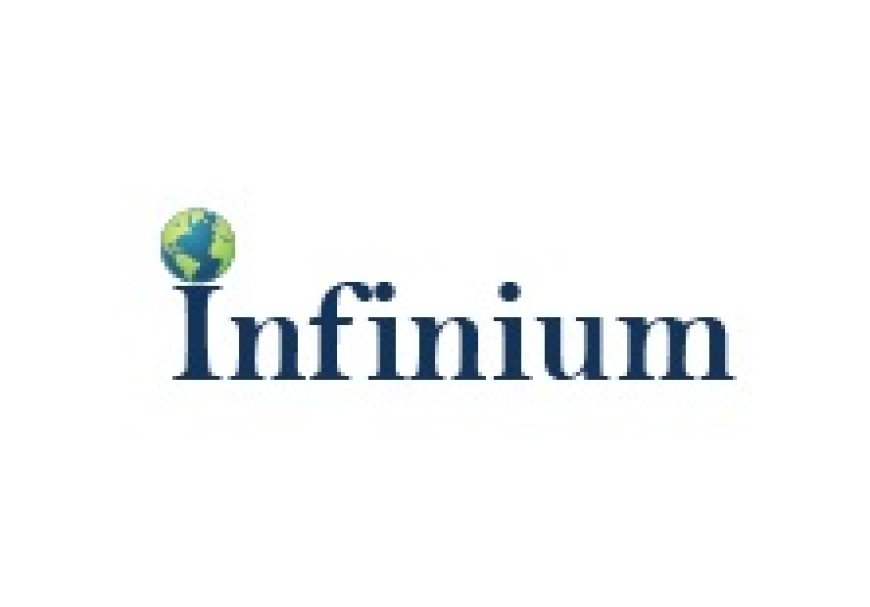Surge in Automotive Production Drives Torque Converter Market Expansion, New Report Reveals
The automotive torque converter market is poised for significant growth, driven by the increasing demand for automatic transmission systems.

The Infinium Global Research analyzes the Torque Converter Market over the period of 2024 to 2032. This report also provides detailed qualitative and quantitative analyses of the market dynamics, market size and future trends in global torque converter market. It will help a lot of decision makers to develop strategies and find new opportunities in the global markets of torque converter. The report covers market changing aspects including drivers, restraints, opportunities, and trends expected to encouragement the expansion of the torque converter market during the period.
Get Sample pages of Report: https://www.infiniumglobalresearch.com/reports/sample-request/1074
A torque converter serves as a critical component in automatic transmission systems, bridging the engine and transmission to allow them to operate independently. It is a type of fluid coupling that transfers rotational power from an engine to a driven load. Positioned between the engine’s flexplate and the transmission, the torque converter employs a fluid-driven mechanism to amplify torque, especially at low speeds, by deflecting fluid off the turbine's curved vanes and engaging the stator's one-way clutch. This function effectively acts as a reduction gear, enhancing the vehicle's performance and efficiency.
The automotive torque converter market is poised for significant growth, driven by the increasing demand for automatic transmission systems. The rise in driver assistance technologies and the integration of advanced electronics in vehicles further fuel this demand, as torque converters play a crucial role in delivering smoother and more responsive driving experiences. However, the market faces challenges due to the higher fuel consumption of torque converter transmissions compared to alternatives like Dual Clutch and Continuously Variable Transmissions (CVTs). Despite this, the shift towards automatic transmissions driven by consumer desires for enhanced comfort and safety is creating ample opportunities for market expansion.
This comprehensive market analysis delves into various aspects of the global torque converter market, including size, segmentation, growth prospects, and competitive dynamics. It covers regional and national market trends, technological advancements, and recent developments. Key segments such as material, end user, channel, and geography are explored to provide a detailed overview. The report also features in-depth information on major market players, including financial performance, market reach, and strategic initiatives. Insights into sales, revenue, and market share for each vendor are provided, offering a thorough understanding of the competitive landscape from 2024 to 2032.
Market Trends
- Shift towards Electrification: The industry is focusing on integrating torque converters with hybrid and electric vehicles.
- Design Innovation: There's a growing emphasis on designing torque converters for optimized performance.
Market Drivers
- Rising Automatic Transmission Demand: The increasing preference for automatic transmissions is boosting market growth.
- Technological Advancements: Improvements in automotive technology are driving the development of advanced torque converters.
- Automotive Production Growth: Expanding automotive production is fueling market demand.
Market Opportunities
- Emerging Markets: Developing countries offer significant growth potential for torque converter manufacturers.
- Product Innovation: Developing more efficient, durable, and cost-effective torque converters can create new market opportunities.
Regional Analysis
· Europe currently holds the largest share of the torque converter market, followed by Asia Pacific.
· The increasing adoption of automatic transmissions in heavy and medium-duty trucks is driving market growth in America.
· Asia Pacific, particularly countries like India, Japan, and China, is poised for significant growth due to the booming automotive industry and the rising demand for automatic transmissions, especially in the OEM segment.
Market Segmentation
· Transmission Type: Automatic, continuously variable (CVT), and dual-clutch transmissions.
· Vehicle Type: Passenger cars and commercial vehicles.
Competitive Landscape
Aisin Seiki, BorgWarner, Schaeffler Group, Valeo S.A., ZF Friedrichshafen, Transtar Industries, Inc., Kapec, EXEDY Corporation, Yutaka Giken Co., Ltd., and Sonnax Industries Inc.
Reasons to Buy this Report:
=> Comprehensive analysis of global as well as regional markets of torque converter.
=> Complete coverage of all the product types and application segments to analyze the trends, developments, and forecast of market size up to 2032.
=> Comprehensive analysis of the companies operating in this market. The company profile includes an analysis of the product portfolio, revenue, SWOT analysis, and the latest developments of the company.
=> Infinium Global Research- Growth Matrix presents an analysis of the product segments and geographies that market players should focus on to invest, consolidate, expand, and/or diversify.
Report Overview: https://www.infiniumglobalresearch.com/reports/global-torque-converter-market
Future Outlook:
The torque converter market is poised for growth as advancements in automotive technologies drive demand. Increasing vehicle production, coupled with the rising popularity of automatic transmissions, is expected to bolster market expansion. Innovations in torque converter design, such as those enhancing fuel efficiency and performance, will play a crucial role. Moreover, the shift towards hybrid and electric vehicles may create opportunities for specialized torque converters, aligning with the industry's evolution.
Conclusion:
In conclusion, the torque converter market is on a trajectory of steady growth, fueled by technological advancements and evolving automotive trends. The ongoing emphasis on improving vehicle performance and efficiency will continue to drive demand. However, manufacturers must adapt to the increasing integration of hybrid and electric vehicles to remain competitive and capitalize on emerging opportunities.












